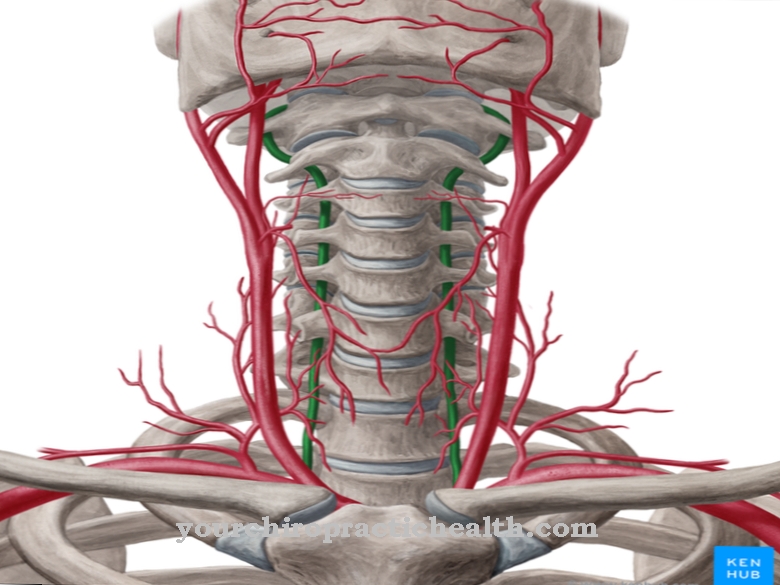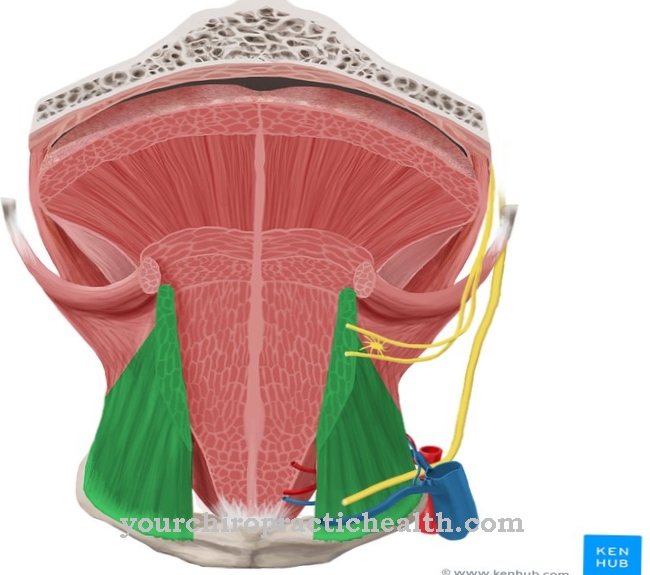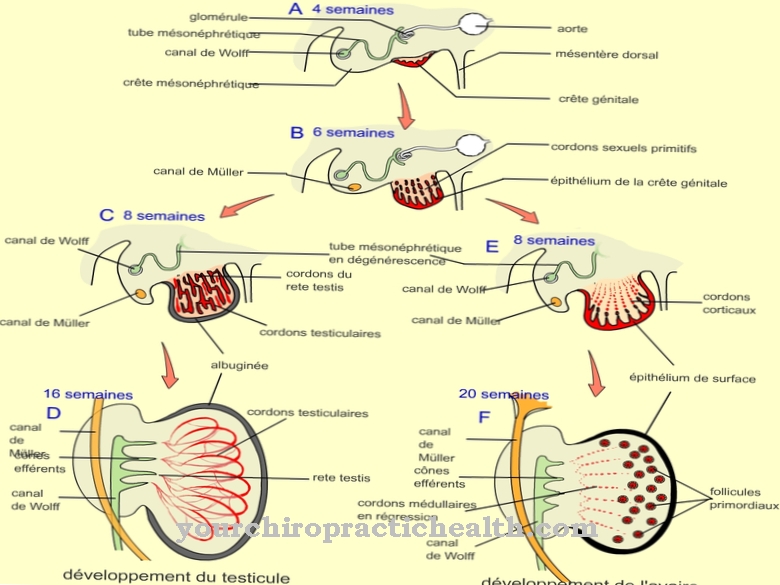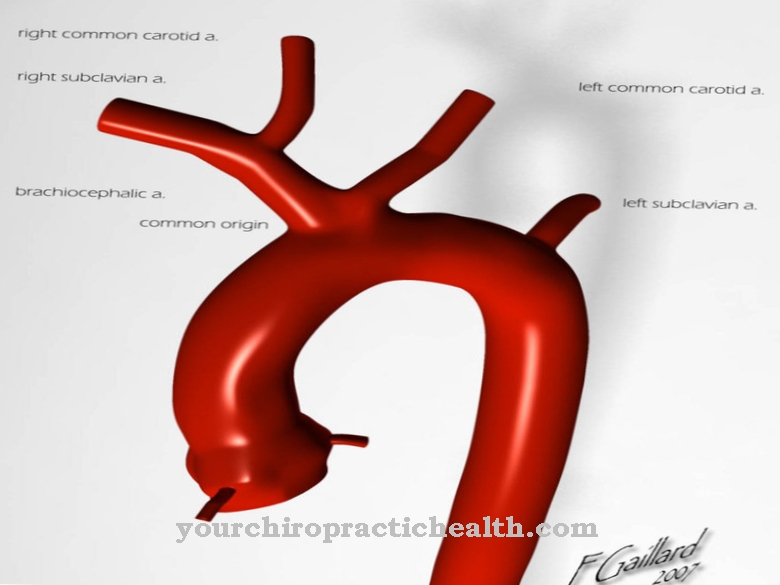A Interneuron, also as Switching neuron or Intermediate neuron is a nerve cell within the central nervous system (CNS). The job of the interneuron is to interconnect two nerve cells. In the narrower sense, it is a sensory (afferent) and a motor (efferent) neuron.
What is an interneuron?
This medical area is covered by neurology and neuroscience. The term is derived from the Greek terms “inter” = between and “neuron” = nerves. Interneurons are nerve cells that are arranged with their end knobs (projections) in a defined area of the central nervous system and are connected there between two or more nerve cells.
They do not have long axons and are therefore unable to transmit signals over long distances. Intermediate neurons show an extremely differentiated, functional and morphological diversity. Intermediate neurons have to cope with a complex variety of tasks, including controlling the input and output of the main neurons (principal cells) and modifying the signal flows between the individual cells.
How complex these tasks are can only be ascertained from the neuro-architecture of the central nervous system, which, however, has so far only been partially medically recorded. There have been various attempts to classify interneurons, but so far only with moderate success, as there is no uniform taxomy.
Anatomy & structure
There are different types of nerve cells. Medicine differentiates between uniporal, bipolar, pseudounipolar and multipolar nerve cells. These are divided into sensory nerve cells, interneurons and motor nerve cells. They work in close cooperation in the human body.
Sensory nerve cells are nerves and nerve fibers that transmit information to the spinal cord and brain via sensory organ receptors. Motor neurons (motor nerve cells) transmit impulses from the brain and spinal cord to the muscles and glands. They are responsible for an orderly sequence of movements in the human body. Interneurons are arranged between the sensory and motor nerve cells and act as mediators. They then forward the incoming signals between the individual areas of the body and process this information in local circuits.
Medicine differentiates between local and intersegmental interneurons. Intermediate neurons usually have much smaller cells with many interconnections than moto- or senso-neurons. These three types of neurons are arranged in the form of chains and networks. The simplest form is the reflex arc. This forms the shortest connection between effector and receptor via the nerve cells of a defined neuronal excitation circuit. The connection from the afferent (supplying direction) to the efferent neuron (leading away direction) takes place at the spinal level via a synapse in the anterior horn of the spinal cord.
This type of reflex is called a monosynaptic reflex arc. Effecors are cells that trigger a certain effect. Most often these are muscle cells that contract (pull together) or relax in response to the incoming signal. The task of the reflex arc is to bundle the incoming action potentials and to ensure an orderly sequence of movements. In this case it ensures that the muscles do not react to the incoming signal with cramps.
Example of the effective cooperation of the various neurons: If the blood sugar level falls below a critical set point, the receptors in the veins report this critical condition via the interneurons and the afferent neurons in the central nervous system. This sends a command to the beta cells in the pancreas via the efferent neurons to release the hormone insulin. This substance then travels via the bloodstream to the liver, which converts glucose into water-soluble glycols and stores it. This mechanism lowers the concentration of glucose in the blood.
Function & tasks
Interconnection neurons receive input from other neurons and, after processing, pass these stimulating or inhibiting signals on to subsequent nerve cells. They do not perform any motor or sensory tasks. Interconnection neurons are arranged between the motor neurons and sensory neurons in the form of functional chains or functional circuits.
In the spinal cord, for example, the poly- and oligosynaptic reflexes and the Renshaw inhibition run via interconnection neurons. This is a reverse inhibition, in which motor neurons transmit axon collaterals to the inhibiting interneurons, which inhibit the motor neuron from which the excitatory signal originated. This limits the duration of the excitation. The brain has interneurons in the form of nerve cells with relatively short axons (type II Golgi cells). These are arranged opposite the projection neurons with long axons. The enteric nervous system (ENS) has sensory interneurons as descendants of the neural crest.
Together with inhibitory and excitatory motor and sensory neurons, these form a complex system. For this reason, interneurons are often referred to as interconnection neurons, as they perform a mediating function between the nerve cells involved, forward incoming signals between the various parts of the body and process data similar to a computer using local circuits. These signals are first picked up by receptors (sensory cells) and converted into electrical signals so that the interneurons can process them.
They calculate information from different sources and forward the result to the next cell. They make up the largest number of neurons in the human body. For example, the human retina has different layers of interneurons.These compute the incoming signals from the photoreceptors (rods and cones) via the retina and evaluate them. During this process, each interneuron is connected to a large number of photoreceptors, which in turn are connected to many interneurons.
You can find your medication here
➔ Medicines for paresthesia and circulatory disordersDiseases
A well-functioning nervous system is essential for maintaining the various body functions. The ongoing exchange of communication between the brain, sensory organs, muscles and neurons enables us to react in good time to the demands of our environment. This mechanism begins with the control of body temperature, breathing, blood circulation and movement sequences.
In addition, there are energy supply, metabolism and sensor technology. The special function of the nerve cells is the processing and transmission of incoming impulses, whereby the body reaction takes place independently without the involvement of the brain. Instead, the reflex arch in the spinal cord is responsible for information processing. In order to bring about a quick reaction to the incoming information, an impulse is sent directly from the spinal cord and carried out by the muscles involved. It seems as if this mechanism is consciously controlled, which is due to the fact that the brain then takes control of this muscle region.
The nerve cells are also given great importance in learning new things. If the central nervous system no longer functions properly or only to a limited extent, this condition can cause a variety of complaints, as nerve cells are found throughout the body. These complaints can be both neurological and physiological in nature, such as mental illnesses and disorders, back pain, restricted movement, muscle and intestinal diseases or metabolic disorders.


.jpg)

























